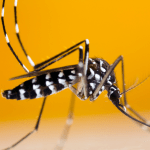In June 2024, WHO shared a disease outbreak news update stating that it has been notified of outbreaks of Oropouche virus disease in two provinces of Cuba: Santiago de Cuba and Cienfuegos. This is the first detection of Oropouche virus disease in the country; WHO therefore suggests that the population is “likely highly susceptible” and identifies “significant risk of additional cases being detected”. There is no evidence of human-to-human transmission.
What is Oropouche?
Oropouche virus disease is an arboviral disease caused by Oropouche virus (OROV), a segmented, single-stranded RNA virus from the Orthobunyavirus genus of the Peribunyaviridae family. It is transmitted to humans through the bite of the Culicoides paraensis midge or some Culex quinquefasciatus mosquitos. WHO suggests that viral circulation includes both epidemic and sylvatic cycles. In the sylvatic cycle, primates, sloths, and potentially birds are vertebrate hosts. However, a “definitive” arthropod vector has not been identified. In the epidemic cycle, humans are the amplifying host.
Disease symptoms are likened to those associated with dengue; they start between four to eight days after the infective bite. Symptoms include fever, headache, joint stiffness, pain, chills, and nausea or vomiting, and can last for up to five to seven days. Although severe clinical presentation is “rare”, it may result in aseptic meningitis.
“There is no specific antiviral treatment or vaccine for Oropouche virus disease.”
Cases reported in May
WHO states that the Ministry of Public Health of Cuba reported its “first ever” outbreak of Oropouche virus disease on 27th May 2024. A total of 74 confirmed cases were reported: 54 from Province of Santiago de Cuba and 20 from Province of Cienfuegos. The cases were detected through “strengthened monitoring and surveillance actions”, a response to increased cases of non-specific febrile illness.
The onset of symptoms in the confirmed cases was reported between 2nd and 23rd May, with a peak in cases observed in epidemic week 21. The most frequently reported symptoms were:
- Fever
- Lower back pain
- Headache
- Loss of appetite
- Vomiting
- Weakness
- Joint pain
- Eye pain
Out of the 74 confirmed cases, 36 are male and 38 are female; the median age is 34 years. All cases showed signs of recovery between the third and fourth day after symptom onset, and no severe or fatal cases were reported by 5th June.
Response and risk assessment
Health authorities in Cuba are implementing public health measures, with a plan to address arboviruses. Actions in this plan include:
- Temporary working groups activated to analyse the epidemiological situation and conduct field operations
- Definition of criteria for suspected and confirmed cases of the disease
- Training all personnel of the National Public Health System on arboviruses, including OROV
- Strengthening human resources for medical care in health areas with transmission
- Reinforcement of vector control actions including focal treatment in transmission and very high-risk blocks, adulticidal treatment, and increased entomological surveillance in transmission areas
- Intensified environmental sanitation actions
- An informative note issued on the situation
WHO’s risk assessment identifies “significant risk of additional case detection” as the population is “likely highly susceptible”. There is also a risk of the disease spreading internationally as Cuba draws international tourism and the putative vector is “widely distributed” in the region. Furthermore, there are other countries with active OROV circulation.
For more infectious disease updates and insights, why not subscribe to our weekly newsletters here?





